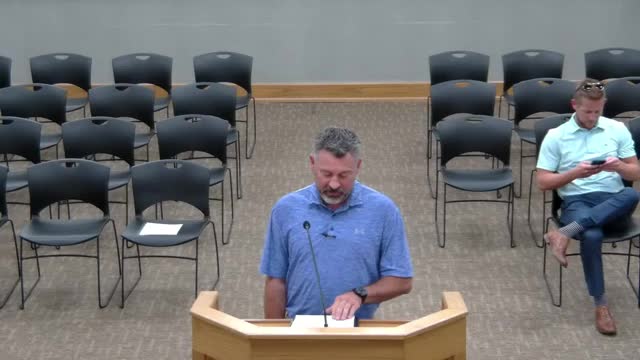Water Quality Testing Sparks Hope for Nonhazardous Sludge
July 03, 2024 | Industrial Authority Meetings, Durant City, Bryan County , Oklahoma

This article was created by AI summarizing key points discussed. AI makes mistakes, so for full details and context, please refer to the video of the full meeting. Please report any errors so we can fix them. Report an error »

In a recent government meeting, officials discussed the ongoing environmental management efforts related to water quality and sludge testing in the area. Ryan Kirk from the Oklahoma Department of Environmental Quality (DEQ) was present to oversee the release of treated water to the city, which was reported to have gone smoothly, with favorable pH levels confirmed during testing.
Looking ahead, the team is preparing to address sludge accumulation within the tanks. Kirk emphasized the importance of conducting a Toxicity Characteristic Leaching Procedure (TCLP) test to determine whether the sludge is hazardous. The results of this test, expected in two to three weeks, will dictate the next steps for disposal or treatment.
If the sludge is deemed nonhazardous, officials plan to mix it with soil, a process that aligns with agricultural practices. Conversely, if the sludge is classified as hazardous, the team intends to solidify it using concrete, a method that has not been previously implemented in Oklahoma. This innovative approach has garnered interest from DEQ, highlighting the significance of the testing outcomes.
Officials expressed optimism about the results and the potential for a sustainable solution, with a collective hope that the sludge will be nonhazardous, allowing for a more straightforward disposal method. The meeting concluded with a commitment to keep all stakeholders informed as the situation develops.
Looking ahead, the team is preparing to address sludge accumulation within the tanks. Kirk emphasized the importance of conducting a Toxicity Characteristic Leaching Procedure (TCLP) test to determine whether the sludge is hazardous. The results of this test, expected in two to three weeks, will dictate the next steps for disposal or treatment.
If the sludge is deemed nonhazardous, officials plan to mix it with soil, a process that aligns with agricultural practices. Conversely, if the sludge is classified as hazardous, the team intends to solidify it using concrete, a method that has not been previously implemented in Oklahoma. This innovative approach has garnered interest from DEQ, highlighting the significance of the testing outcomes.
Officials expressed optimism about the results and the potential for a sustainable solution, with a collective hope that the sludge will be nonhazardous, allowing for a more straightforward disposal method. The meeting concluded with a commitment to keep all stakeholders informed as the situation develops.
View full meeting
This article is based on a recent meeting—watch the full video and explore the complete transcript for deeper insights into the discussion.
View full meeting
